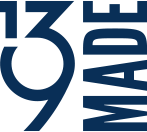About Human Trafficking
There are more people in slavery today than at any other time in human history. Human trafficking—nothing less than modern-day slavery—often involves the most vulnerable populations and takes the form of forced prostitution, forced labor, and domestic servitude.
The International Labor Organization conservatively estimates that there are 20.9 million victims of human trafficking globally, including 5.5 million children. 55% are women and girls. The ILO estimates human trafficking generates $150.2 billion in illegal profits each year. More than one-third of these profits are from forced labour exploitation and the remaining two-thirds from sexual exploitation. 98% of these victims are women and girls.
Slavery has existed for thousands of years, but changes in the world’s economy and societies over the past 50 years have enabled a resurgence of slavery. Millions have become vulnerable to slave holders and human traffickers looking to profit through the theft of people’s lives.
What is human trafficking?
The recruitment and/or movement of someone within or across borders, through the abuse of power/ position with the intention of forced exploitation, commercial or otherwise.
What are the types of trafficking?
Forced labor and sexual exploitation are the two primary categories of trafficking. Other specific types of trafficking include:
• Domestic servitude
• Forced marriage
• Child soldiering
• Forced begging
• Organ trafficking
Watch the video below by MTV Exit to see different scenarios of human-trafficking.
'Broken Dreamers' MTV EXIT & BIRKII from MTV EXIT on Vimeo.
Who is vulnerable to trafficking?
• Displaced persons, minorities, and other marginalized groups
• Impoverished populations
• Survivors of interpersonal violence and homelessness
• Children make up about 25% of those victimized
How many people are trafficked?
Estimates on how many people are trafficked globally vary from 20 to 37 million.
• Forced Labor Exploitation — 67.9%
• Forced Sexual Exploitation — 21.5%
• State Imposed Force Labor — 10.5%
Who are traffickers?
Traffickers can be any age, gender, ethnicity or nationality. In many cases traffickers are related to or are close acquaintances of those they are exploiting. They use force, fraud, or coercion to get their victims.
What are some of the after-effects that the victims could experience?
• Drug & alcohol dependencies
• Depression & anxiety
• HIV & other STDs
• Post Traumatic Stress Disorder (PTSD)
• Unplanned pregnancy
• Trauma bonds & Stockholm syndrome
• Suicidal tendencies
• Mental illness
How can you help?
• Be informed
• Take actions, support anti-trafficking organizations
• Report trafficking
• Fund raising/donate
• Pray
___
Sources: FBI, Exoduscry.com, HumanTraffickingCenter.org, Love146.org, standingforfreedom2015.com, freetheslaves.net, polarisproject.org.
